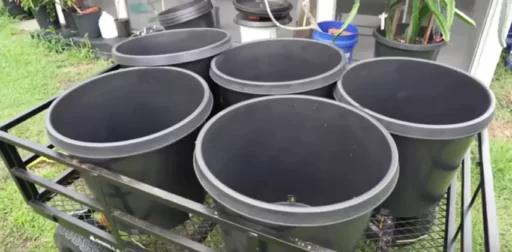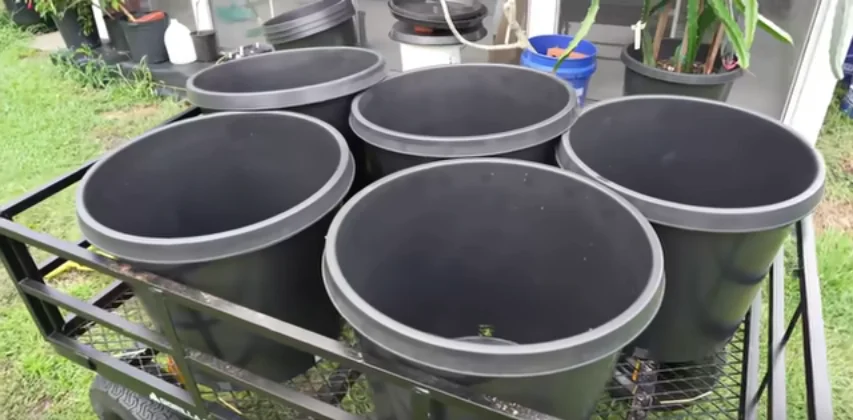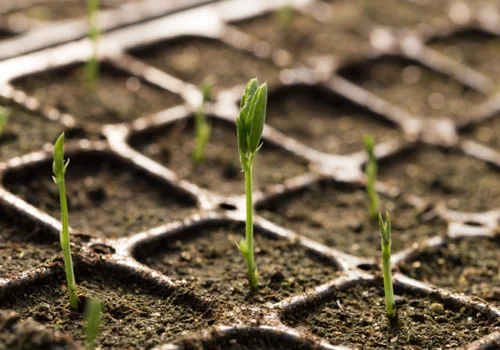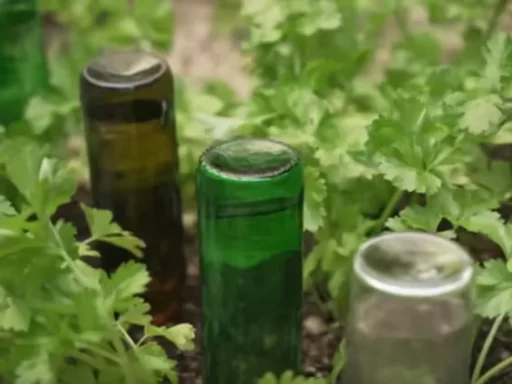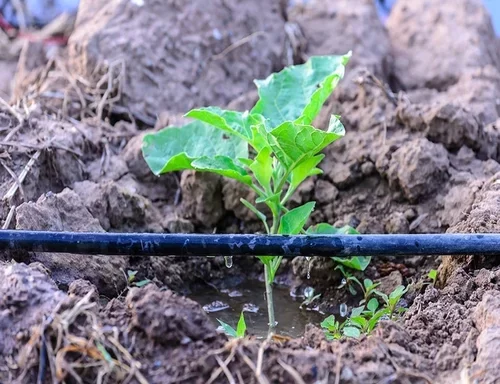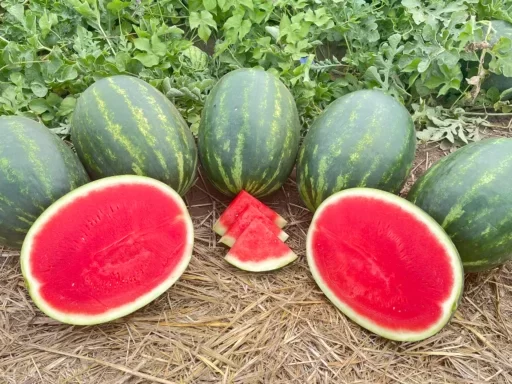Gardeners often find themselves with an abundance of pots, but instead of letting them pile up, there are several creative and sustainable ways to reuse them. By reimagining their purpose, you can give your old pots new life while improving your gardening efficiency. Whether you’re growing tomatoes, creating plant collars, or crafting a bug hotel, there’s a way to make the most of those seemingly disposable containers.
In this article, we’ll explore innovative ways to repurpose old garden pots and share tips for ensuring your garden thrives with these practical hacks. Let’s dive into how you can turn these unused items into valuable gardening tools.
1. Create Protective Plant Collars
One of the simplest ways to repurpose old pots is by cutting the bottom off to make plant collars. These collars are especially useful for young plants and transplants, particularly early in the growing season when temperatures are cooler. By placing the collar around the base of the plant and pushing it into the soil, you’ll protect the plant from chilly winds and pests like earwigs or woodlice.
2. Tomato Supports for Extra Stability
Larger, bottomless pots can serve as excellent supports for tomatoes. At planting time, place the pot around the plant and allow roots to develop from the stem inside the container. This technique will help anchor the plant securely in the ground, giving it access to more nutrients and moisture. Plus, the pot serves as a water trap, ensuring water percolates down slowly and benefits the tomato plant.
3. Organize Gardening Tools and Supplies
Your unused pots can double as storage containers for small gardening tools, such as pruners, labels, pencils, and twine. Attach a few pots to a greenhouse bench or a wall near your gardening area, keeping your essentials close at hand and easily accessible.
4. Save Potting Mix with an Inverted Pot
Large containers for growing plants often require a lot of potting mix, which can become both expensive and heavy. For plants with shallow roots, such as lettuce or strawberries, you can reduce the amount of potting mix needed by placing an inverted pot inside the larger container. This trick lightens the container’s weight and saves on potting mix while still providing enough room for roots to thrive.
5. Build a Bug Hotel
A fun and eco-friendly project is creating a bug hotel using a large container packed with natural materials like hollow stems, dried leaves, straw, and bark. This provides beneficial bugs with a cozy spot to overwinter in your garden. Building a bug hotel in the autumn ensures that these insects will be ready to control pests in the spring. Just make sure the materials are flush with the rim of the pot so they stay secure.
6. Manage Earwigs with Straw-Filled Pots
Earwigs are beneficial for controlling soft-bodied pests, but they can also damage delicate plants. You can manage their presence by placing a pot stuffed with slightly moistened straw near affected plants. The earwigs will hide in the straw during the day, and you can either shake them out or relocate them to areas where they’ll be helpful, such as near fruit trees.
7. Control Invasive Plants Like Mint
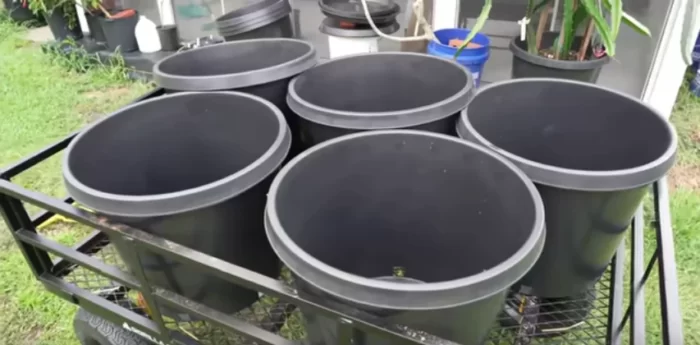
Mint and other invasive plants can quickly take over your garden if left unchecked. One clever way to manage these plants is to plant them in a pot and then bury the pot in the ground. This prevents the plant’s roots from spreading and keeps it contained. Additionally, using a specific potting mix in the container allows you to tailor the soil conditions to suit the plant’s needs without affecting neighboring plants.
8. Make Plant Labels from Old Pots
Cutting old, lighter-colored pots into strips allows you to create durable plant labels. These labels can be used to identify different crops, and you can even color-code them based on plant types—such as one color for vegetables and another for flowers.
9. Protect Plants from Late Spring Frosts
Spring frosts can catch gardeners by surprise, but you can protect delicate transplants by using pots as temporary coverings. Simply stack two pots together to trap air between them, which provides insulation. Place the pots over the plants overnight to shield them from the cold. For extra warmth, you can cover the pots with sacking or cloth.
10. Upcycle Pots into Garden Art
Get creative with your old pots by turning them into garden art. Paint or decorate the pots to create eye-catching displays, or build whimsical sculptures, such as a “flower pot man.” These projects can brighten up a dull wall or fence and add personality to your garden.
11. Share or Recycle Extra Pots
If you find yourself with an excess of pots, consider giving them away to friends, neighbors, or community gardens. Many garden centers offer takeback schemes for recycling pots, and some areas have curbside recycling programs for specific types of pots. Alternatively, switch to biodegradable pots made from materials like bamboo or coir, which are environmentally friendly options.
12. Clean and Maintain Pots for Reuse
Keeping your pots clean is essential for preventing the spread of pests, fungi, and diseases. A simple cleaning solution of water and dishwashing soap, along with a bristly brush, is all you need to scrub away dirt and old potting mix. For terracotta pots with mineral deposits, a wire brush can help lift off unsightly stains. Soaking pots in a natural disinfectant made from citrus extracts is an optional step to ensure they’re thoroughly clean before reuse.
Frequently Asked Questions
1. How do I repurpose old garden pots for plant protection?
You can repurpose old pots by cutting the bottom off to create plant collars, which protect young plants from chilly winds and pests.
2. Can I use old pots to support tomato plants?
Yes, bottomless pots are great for supporting tomato plants. They create extra space for roots to develop, anchoring the plant securely and improving nutrient absorption.
3. How can I reduce the amount of potting mix needed for large containers?
Placing an inverted pot inside a large container reduces the amount of potting mix needed, especially for shallow-rooted plants like lettuce.
4. What is a bug hotel, and how can I make one?
A bug hotel is a habitat for beneficial insects. You can create one by packing a large pot with natural materials like straw, leaves, and sticks.
5. How can I manage invasive plants like mint using pots?
To control invasive plants, plant them in a pot and then bury the pot in the ground. This keeps the roots contained and prevents them from spreading.
6. What should I do with extra pots I no longer need?
You can give away extra pots, recycle them through local schemes, or switch to biodegradable pots for a more sustainable option.
7. How do I clean pots for reuse in the garden?
Use water, dishwashing soap, and a bristly brush to scrub pots clean. For terracotta pots with mineral deposits, a wire brush works well to remove stains.

